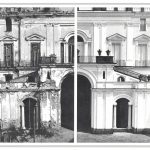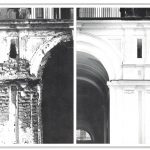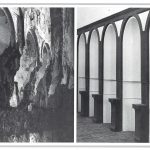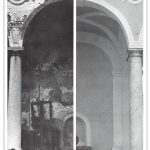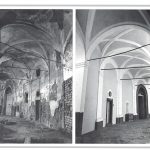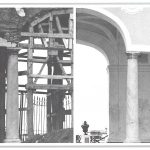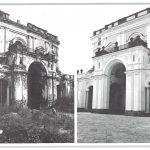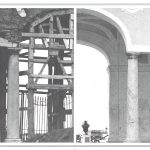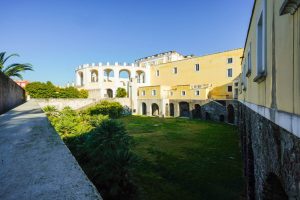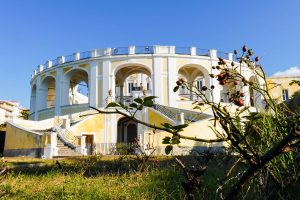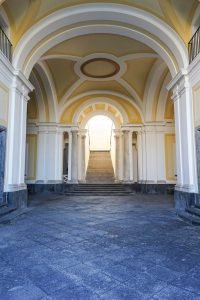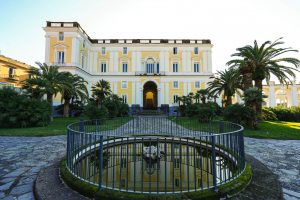point
03
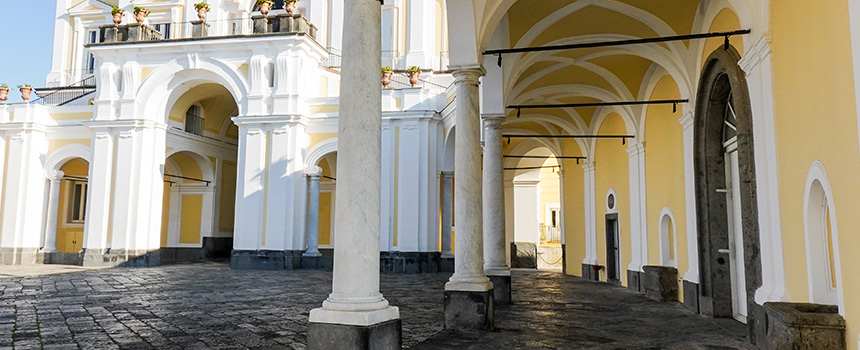
From Mario Gioffredo to Luigi Vanvitelli
In 1760, disputes between the owners and Mario Gioffredo led to the dissolution of the contracts for both the Resina estate and for renovations of the Neapolitan palace in the city center. After a brief interlude in which operations were conducted by royal architect Michelangelo Giustiniani, architect Luigi Vanvitelli took over the construction site. After winning the royal commission for the Royal Palace of Caserta in 1751 (even beating Gioffredo to it), Vanvitelli had achieved such a level of reputation in just a few years, that he was recognized among the most illustrious architects of the kingdom. Don Luzio met him in 1762 during his governor stint at the Pio Monte del S. Salvatore, and in 1763 he decided to entrust him with his construction sites between Naples and Resina. The arcade was the signature that the new construction manager left on Gioffredo’s building; by eliminating the circular shape in favor of a greater expansion of space, due to the elliptical shape of the arcade, Vanvitelli provided that ‘extra’ that Don Luzio demanded for his villa of delights. The recruitment of piperno masters, cabinetmakers and plasterers, together with the organization of the external spaces, allowed the Villa to become a microcosm in which each component emphasizes the role of the “dominus” that Luzio Di Sangro wanted for himself, a position that he, to an extent, managed to achieve in the Neapolitan society of the time.
The stable is a brilliant example of how Vanvitelli did not reject his idea of a design devoted to the concept of balance, light and grace even for service spaces. The elongated and elliptical ribs on the ceiling that followed the sloping course of the environment, along with the niches on the walls, established an incisive pattern, that was also enhanced by the piperno pillars used for the Duke’s thoroughbreds, which were raised in his Molise estates between Casacalenda and Larino.
You are here
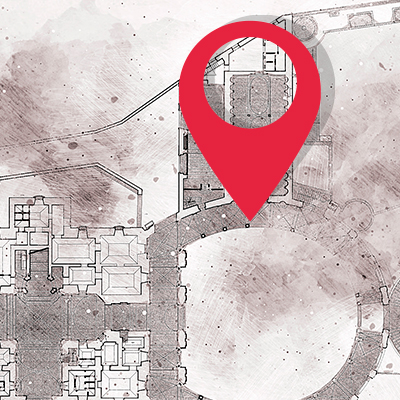
More about:
-
BEFORE AND AFTER
Some before and after photos of the colonnade and the garden side, give an idea of the great restoration site that Villa Campolieto lived in the 70s, with the birth of the Vesuvius Villas Authority, now the Vesuviane Villas Foundation. For more info on the Foundation: Ente Ville Vesuviane Foundation.



